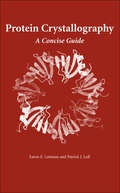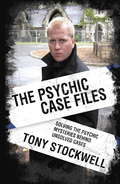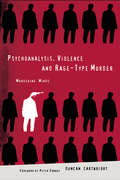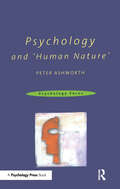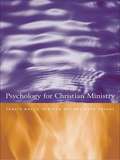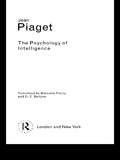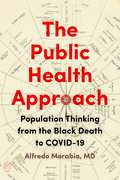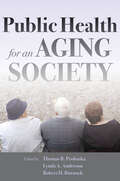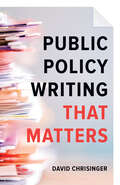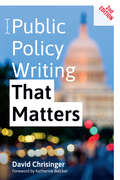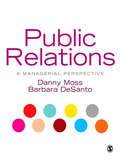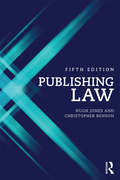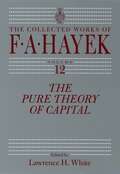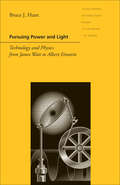- Table View
- List View
Protecting the Arctic: Indigenous Peoples and Cultural Survival (Studies in Environmental Anthropology #Vol. 3)
by Mark NuttallProtecting the Arctic explores some of the ways in which indigenous peoples have taken political action regarding Arctic environmental and sustainable development issues, and investigates the involvement of indigenous peoples in international environmental policy- making. Nuttall illustrates how indigenous peoples make claims that their own forms of resource management not only have relevance in an Arctic regional context, but provide models for the inclusion of indigenous values and environmental knowledge in the design, negotiation and implementation of global environmental policy.
The Protector
by S.J. DeasAutumn,1646. The First Civil War is over, but the killing is not yet done.William Falkland, former favourite of King Charles turned reluctant investigator for Cromwell, seeks his missing family. As his hopes are once again dashed, a figure from his past reappears - Cromwell is not finished with him. Ordered to London, Falkland must help an irascible man of letters named John Milton, whose cherished sister was apparently abducted by the king's supporters.Falkland's task will lead him towards a brutal act buried in the maelstrom of the War, and a secret that threatens not just his own life, but also the fragile peace England so desperately needs...Praise for The Royalist, the first powerful mystery featuring William Falkland:'A page-turning novel, unpredictable and suspenseful, haunted by intriguing twists and turns... The characters are vividly portrayed, three-dimensional and convincing' Historical Novels Review'I take my hat off to the author for his ability and desire to portray all of this horror and dirt... Highly recommended' Parmenion Books'Deas writes at a furious pace... It is his wonderful descriptions and his creation of a powerfully charged atmosphere that really capture the reader' We Love This Book
Protein Crystallography: A Concise Guide
by Eaton E. Lattman Patrick J. LollThe proteome remains a mysterious realm. Researchers have determined the structures of only a small fraction of the proteins encoded by the human genome. Crystallography continues to be the primary method used to determine the structures of the remaining unknown proteins. This imaging technique uses the diffraction of X-rays to determine a protein’s three-dimensional molecular structure.Drawing on years of research and teaching experience, Eaton E. Lattman and Patrick J. Loll use clear examples and abundant illustrations to provide a concise and accessible primer on protein crystallography. Discussing the basics of diffraction, the behavior of two- and three-dimensional crystals, phase determination (including MIR and MAD phasing and molecular replacement), the Patterson function, and refinement, Lattman and Loll provide a complete overview of this important technique, illuminated by physical insights.The crisp writing style and simple illustrations will provide beginner crystallographers with a guide to the process of unraveling protein structure.
Psychiatric Nursing Care Plans - E-Book
by Katherine M. Fortinash Patricia A. Holoday Worret- New care plans, many that focus on the family, join completely updated and revised care plans to make this text the most comprehensive psychiatric nursing care planning text available. - Dynamic internal design emphasizes the care plans as the focus of the text; tabbed pages noting the relevant disorder and a complete list of care plans with page number references make finding a specific care plan easier than ever before. - Appropriate Nursing Interventions Classification (NIC) and Nursing Outcomes Classification (NOC) labels are presented with each care plan in order that students become familiar with these emerging classifications and practicing nurses can easily identify them for use in their care setting if applicable. - A comprehensive pharmacotherapy appendix includes the most recent psychotropic drug information and appropriate related client care. - Online Resources for the nurse, client, and family conclude each chapter.
Psychiatric Nursing - eBook: Psychiatric Nursing - eBook
by Norman L. Keltner Debbie SteeleCovering the field's latest trends and treatments, Psychiatric Nursing, 8th Edition provides you with the solid, therapeutic skills you need to deliver safe and effective psychiatric nursing care. This new edition features a unique, three-pronged approach to psychotherapeutic management which emphasizes the nurse's three primary tools: themselves and their relationship with patients, medications, and the environment. Written in a friendly, approachable style, this text clearly defines the nurse's role in caring for individuals with psychiatric disorders like no other book on the market! - Unique! A practical, three-pronged approach to psychotherapeutic management includes: 1) the therapeutic nurse-patient relationship, 2) psychopharmacology, and 3) milieu management. - Unique! Norm's Notes offer helpful tips from the lead author, Norman Keltner, at the beginning of each chapter, making it easier to understand difficult topics - DSM-5 information is integrated throughout the text, along with updated content and NANDA content. - Patient and Family Education boxes highlight information that the nurse should provide to patients and families. - Nursing care plans highlight the nurse's role in psychiatric care, emphasizing assessment, planning, nursing diagnoses, implementation, and evaluation for specific disorders. - Case studies depict psychiatric disorders and show the development of effective nursing care strategies. - NEW! Chapter on Models for Working with Psychiatric Patients revised as new chapter on Emotional Focused Model of Behavior. - NEW! Update to various chapters within Unit III: Medication: Psychopharmacology, include the latest drugs used for managing psychiatric disorders. - NEW! Update to Communicate Professionally chapter includes methods of communication including social media and other current forms of technology. - NEW! Update to Variables Affecting The Therapeutic Environment: Violence and Suicide chapter reorganizes how the five-phase assault cycle is presented so it flows better and is easier to comprehend. - NEW! Several of the clinical disorders chapters such as the Schizophrenia, Depressive Disorders, and Anxiety Disorders updated with the latest information on treatments and drugs.
Psychic Case Files: Solving the Psychic Mysteries Behind Unsolved Cases
by Tony StockwellMissing persons, mystery suicides, haunted houses and murder...Tony Stockwell is regularly asked by victims of crime and their families, to use his psychic powers to help investigate cases, often criminal, that have not yielded to conventional methods. In this fascinating collection, he opens his case files, including: "Suicide or Murder?" in which, at the request of a family, Tony investigates the death of a young boy who was killed in an apparent suicide, which Tony believes involved foul play. In "Missing Children", two children mysteriously disappear while their mother's back is turned. Years later, Tony reads for her and finds a clue to their whereabouts...And many more...This is a treasure trove for anyone who is interested in the realm beyond our own.
Psychoanalysis, History and Subjectivity: Now of the Past
by Roger KennedyClinical psychoanalysis since Freud has put reconstruction of the patient's history at the forefront of its task but in recent years, this approach has not been so prominent. This book aims to explore and re-evaluate the relationship between history and psychoanalysis. Roger Kennedy develops new perspectives on historiography by applying psychoanalytic insight to the key issues of narrative, time and subjectivity in the construction of historical accounts. He also throws new light on the importance of history for and within psychoanalytic treatment. It is argued that human subjectivity is a major element in any historical enterprise, both the subjectivity of the historian or clinician and that of those being studied. Illustrated with clinical examples, Psychoanalysis, History and Subjectivity covers areas such as postmodernism, the nature of memory, clinical evidence and the place of trauma. Psychoanalysis, History and Subjectivity will be of great interest both to professionals in the psychoanalytic and therapeutic fields and to historians.
Psychoanalysis, Violence and Rage-Type Murder: Murdering Minds
by Duncan CartwrightWhat turns an apparently 'normal' individual into a killer?Many people who commit "rage type" murders have no history of violence. Using psychoanalytic theory and a number of case studies, this book isolates key psychological factors that appear to help explain why such acts of extreme violence occur.Starting from a psychoanalytic standpoint, Psychoanalysis, Violence and Rage-Type Murder argues for a pluralistic approach to understanding aggression, and claims that the origins of aggression have no single source or cause. Drawing broadly on psychological, criminological and psychoanalytic research the author outlines the clinical features of the act and explores the possible role that psychopathology and personality might play in the build up to murder. These observations raise a number of questions about the so-called 'normality' of the individual alongside the capacity to commit murder, and how we might understand the stability of such offenders. Psychoanalysis, Violence and Rage-Type Murder will be of great interest to psychotherapists, forensic psychotherapists, psychoanalysts, psychologists, criminologists and health care workers.
Psychology and 'Human Nature'
by Peter AshworthPsychology and 'Human Nature' problematizes what psychology usually takes for granted - the meaning of the psyche or 'human nature'. Peter Ashworth provides a coherent account of many of the major schools of thought in psychology and its related disciplines, including: sociobiology and evolutionary psychology, psychoanalysis, cognitive psychology, radical behaviourism, existentialism, discursive psychology and postmodernism. For each approach he considers the claims or assumptions being made about 'human nature', especially regarding issues of consciousness, the self, the body, other people and the physical world.Psychology and 'Human Nature' will be essential reading for all students of psychology.Series Details; The Psychology Focus Series provides students with a new focus on key topic areas in psychology.Each short book:* presents clear, in-depth coverage of a discrete area with many applied examples* assumes no prior knowlede of psychology* has been written by an experienced teacher* has chapter summaries, annotated further reading and a glossary of key terms
Psychology for Christian Ministry
by Rebecca Nye Sara Savage Fraser WattsThis introduction to psychology has been devised for those training for and working in the clergy. Ideal both as a professional handbook and a textbook, it covers social, developmental, educational, occupational and counselling psychology, as well as the psychology of religion. It carefully considers the processes of personal change and growth central to religion.
The Psychology of Intelligence
by Jean PiagetThink of developmental psychology, and the name of Jean Piaget immediately springs to mind. His theory of learning lies at the very heart of the modern understanding of the human learning process, and he is celebrated as the founding father of child psychology. A prolific writer, is the author of more than fifty books and several hundred articles. The Psychology of Intelligence is one of his most important works. Containing a complete synthesis of his thoughts on the mechanisms of intellectual development, it is an extraordinary volume by an extraordinary writer. Given his significance, it is hardly surprising that Psychology Today pronounced Piaget the Best Psychologist of the twentieth century.
The Pub Landlord's Great British Pub Quiz Book
by Al MurrayWho invented the pub quiz? The British, of course! Who doesn’t enjoy a rousing question-and-answer session over a pint and some scratchings? Indeed, what higher calling is there than standing in the pub loudly demanding answers to difficult questions like ‘d'you want some?’ Here, for your pleasure, Britain’s leading pub landlord, The Pub Landlord, presents the finest collection of facts imaginable. Enjoy the attention of friends and strangers by revealing how many James Bonds there were, how many times the French have capitulated and exactly how long those pickled eggs have been in that jar on the bar. The ladies love a well-read man and this book will give you the tools needed to impress her (don’t worry, answers are included). None of your French-type philosophical musings here. No, this is a proper quiz for the Great British Public. In a public house. Or your living room.
Public Health for an Aging Society
by Lynda A. Anderson Robert H. Binstock Thomas R. ProhaskaPublic Health and Aging was published to critical acclaim almost fifteen years ago. Much has changed in public health since then. Thomas R. Prohaska, Lynda A. Anderson, and Robert H. Binstock now offer a completely new and updated overview of the field in Public Health for an Aging Society.This comprehensive survey discusses research, policy, and practice; managing and preventing diseases; promoting mental and physical health; and maintaining quality of life for an aging society. The fields of public health and aging have grown increasingly complex. Given the interdependency of issues posed by an aging society, the editors of this volume expand the traditional scope and treatments of public health and aging by adopting a social-ecological perspective that incorporates individual, family, community, societal, and environmental concerns. Chapters address the most critical public health issues facing an aging society, including Medicare and family caregiving, and introduce many new and emerging concepts, such as emergency preparedness, technology in aging, translational research, genomics, and environmental influences on health and health practices.The emergence of an aging society in the United States has far-reaching consequences for every generation. This book provides the latest information and future directions for the public health of this growing population. Students and practitioners will find Public Health for an Aging Society an invaluable resource both in the workplace and the classroom.
Public Policy Writing That Matters
by David ChrisingerStudents and professionals across a variety of disciplines need to write public policy in a manner that inspires action and genuine change. You may have amazing ideas about how to improve the world, but if you aren;€™t able to communicate these ideas well, they simply won;€™t become reality. In Public Policy Writing That Matters, communications specialist David Chrisinger argues that public policy writing is most persuasive when it tells clear, concrete stories about people doing things. Combining helpful hints and cautionary tales with writing exercises and excerpts from sample policy documents, Chrisinger teaches readers to craft concise, story-driven pieces that exceed the stylistic requirements and limitations of traditional policy writing.Too often, public policy writing is convoluted, opaque, and exclusive. Chrisinger, who teaches introductory policy writing courses around the country, offers a step-by-step guide for anyone interested in planning, organizing, developing, writing, and revising accessible public policy. From the most effective use of data visualization, the best way to write a sentence, and the ideal moment to add a compelling anecdote to advice on using facts to strengthen an argument, this little book, inspired by Strunk & White;€™s classic style guide, will allow anyone crafting public policy to make a bigger impact. Aimed at helping students and professionals overcome their default impulses to merely "explain," this book reveals proven, classroom-tested tips for writing sophisticated policy that is also easy to understand. This practical, concise handbook will not only aid students throughout graduate school but will also remain a reference to consult throughout their professional careers. A vital tool for any policy writer or analyst, Public Policy Writing That Matters is a book for everyone passionate about using writing to effect real and lasting change.
Public Policy Writing That Matters
by David ChrisingerStudents and professionals across a variety of disciplines need to write public policy in a manner that inspires action and genuine change. You may have amazing ideas about how to improve the world, but if you aren;€™t able to communicate these ideas well, they simply won;€™t become reality. In Public Policy Writing That Matters, communications specialist David Chrisinger argues that public policy writing is most persuasive when it tells clear, concrete stories about people doing things. Combining helpful hints and cautionary tales with writing exercises and excerpts from sample policy documents, Chrisinger teaches readers to craft concise, story-driven pieces that exceed the stylistic requirements and limitations of traditional policy writing.Too often, public policy writing is convoluted, opaque, and exclusive. Chrisinger, who teaches introductory policy writing courses around the country, offers a step-by-step guide for anyone interested in planning, organizing, developing, writing, and revising accessible public policy. From the most effective use of data visualization, the best way to write a sentence, and the ideal moment to add a compelling anecdote to advice on using facts to strengthen an argument, this little book, inspired by Strunk & White;€™s classic style guide, will allow anyone crafting public policy to make a bigger impact. Aimed at helping students and professionals overcome their default impulses to merely "explain," this book reveals proven, classroom-tested tips for writing sophisticated policy that is also easy to understand. This practical, concise handbook will not only aid students throughout graduate school but will also remain a reference to consult throughout their professional careers. A vital tool for any policy writer or analyst, Public Policy Writing That Matters is a book for everyone passionate about using writing to effect real and lasting change.
Public Policy Writing That Matters
by David ChrisingerA thoroughly updated and expanded guide to honing your public policy writing skills—and making a significant impact on the world.Professionals across a variety of disciplines need to write about public policy in a manner that inspires action and genuine change. You may have amazing ideas about how to improve the world, but if you aren't able to communicate these ideas well, they simply won't become a reality. In Public Policy Writing That Matters, communications expert David Chrisinger, who directs the Harris Writing Program at the University of Chicago and worked in the US Government Accountability Office for a decade, argues that public policy writing is most persuasive when it tells clear, concrete stories about people doing things. Combining helpful hints and cautionary tales with writing exercises and excerpts from sample policy analysis, Chrisinger teaches readers to craft concise, story-driven pieces that exceed the stylistic requirements and limitations of traditional policy writing.Aimed at helping students and professionals overcome their default impulses to merely "explain," this book reveals proven tips—tested in the real world and in the classroom—for writing sophisticated policy analysis that is also easy to understand. For anyone interested in planning, organizing, developing, writing, and revising accessible public policy, Chrisinger offers a step-by-step guide that covers everything from the most effective use of data visualization to the best ways to write a sentence, from the ideal moment for adding a compelling anecdote to advice on using facts to strengthen an argument. This second edition addresses the current political climate and touches on policy changes that have occurred since the book was originally published. A vital tool for any policy writer or analyst, Public Policy Writing That Matters is a book for everyone passionate about using writing to effect real and lasting change.
Public Policy Writing That Matters
by David ChrisingerA thoroughly updated and expanded guide to honing your public policy writing skills—and making a significant impact on the world.Professionals across a variety of disciplines need to write about public policy in a manner that inspires action and genuine change. You may have amazing ideas about how to improve the world, but if you aren't able to communicate these ideas well, they simply won't become a reality. In Public Policy Writing That Matters, communications expert David Chrisinger, who directs the Harris Writing Program at the University of Chicago and worked in the US Government Accountability Office for a decade, argues that public policy writing is most persuasive when it tells clear, concrete stories about people doing things. Combining helpful hints and cautionary tales with writing exercises and excerpts from sample policy analysis, Chrisinger teaches readers to craft concise, story-driven pieces that exceed the stylistic requirements and limitations of traditional policy writing.Aimed at helping students and professionals overcome their default impulses to merely "explain," this book reveals proven tips—tested in the real world and in the classroom—for writing sophisticated policy analysis that is also easy to understand. For anyone interested in planning, organizing, developing, writing, and revising accessible public policy, Chrisinger offers a step-by-step guide that covers everything from the most effective use of data visualization to the best ways to write a sentence, from the ideal moment for adding a compelling anecdote to advice on using facts to strengthen an argument. This second edition addresses the current political climate and touches on policy changes that have occurred since the book was originally published. A vital tool for any policy writer or analyst, Public Policy Writing That Matters is a book for everyone passionate about using writing to effect real and lasting change.
Public Relations: A Managerial Perspective
by Barbara Desanto Dr Danny MossElectronic Inspection Copy available for instructors here Taking a managerial perspective, this book explores public relations and its role in the wider organizational world. Contributors explore a variety of contexts in which the relevance of understanding these two interlinking domains is so paramount, such as corporate branding and reputation, government relations and community communications, as well as drawing on experise of legal considerations and ethical awareness. The effective management of public relations is crucial within any organization, but a wider managerial awareness and support of its role is equally critical. Public Relations: A Managerial Perspective offers an original and vital discussion of these challenges for second and third year undergraduate and postgraduate students of public relations, corporate communications and public affairs.
Publishing Law
by Hugh Jones Christopher BensonPublishing Law is an authoritative and engaging guide to a wide range of legal issues affecting publishing today. Hugh Jones and Christopher Benson present readers with clear and accessible guidance to the complex legal areas specific to the ever evolving world of contemporary publishing, including copyright, moral rights, contracts and licensing, privacy, confidentiality, defamation, infringement and trademarks, with analysis of legal issues relating to sales, advertising, marketing, distribution and competition. This new fifth edition presents updated coverage of the key principles of copyright , as well as new copyright exceptions, licensing and open access. There is also further in-depth coverage of the legal issues around the sale of digital content. Key features of the fifth edition include: updated coverage of EU and UK copyright, including a new chapter on copyright exceptions following the significant changes in the 2014 Regulations Comprehensive coverage of publishing contracts with authors, as well as with other providers, including translators, contributors and contracts for subsidiary rights up to date coverage of the Defamation Act 2013, and other changes to EU and UK legislation exploration of the legal issues relating to digital publishing, including eBook and other electronic agreements, data protection and online issues in relation to privacy, and copyright infringement a range of summary checklists on key issues, ranging from copyright ownership to promotion and data protection useful appendices offering an A to Z glossary of legal terms and lists of useful address and further reading.
The Pure Theory of Capital (The Collected Works of F. A. Hayek #12)
by F. A. HayekThe Pure Theory of Capital, F. A. Hayek’s long-overlooked, little-understood volume, was his most detailed work in economic theory. Originally published in 1941 when fashionable economic thought had shifted to John Maynard Keynes, Hayek’s manifesto of capital theory is now available again for today’s students and economists to discover. With a new introduction by Hayek expert Lawrence H. White, who firmly situates the book not only in historical and theoretical context but within Hayek’s own life and his struggle to complete the manuscript, this edition commemorates the celebrated scholar’s last major work in economics. Offering a detailed account of the equilibrium relationships between inputs and outputs in an economy, Hayek’s stated objective was to make capital theory—which had previously been devoted almost entirely to the explanation of interest rates—“useful for the analysis of the monetary phenomena of the real world.” His ambitious goal was nothing less than to develop a capital theory that could be fully integrated into the business cycle theory.
The Pure Theory of Capital (The Collected Works of F. A. Hayek #12)
by F. A. HayekThe Pure Theory of Capital, F. A. Hayek’s long-overlooked, little-understood volume, was his most detailed work in economic theory. Originally published in 1941 when fashionable economic thought had shifted to John Maynard Keynes, Hayek’s manifesto of capital theory is now available again for today’s students and economists to discover. With a new introduction by Hayek expert Lawrence H. White, who firmly situates the book not only in historical and theoretical context but within Hayek’s own life and his struggle to complete the manuscript, this edition commemorates the celebrated scholar’s last major work in economics. Offering a detailed account of the equilibrium relationships between inputs and outputs in an economy, Hayek’s stated objective was to make capital theory—which had previously been devoted almost entirely to the explanation of interest rates—“useful for the analysis of the monetary phenomena of the real world.” His ambitious goal was nothing less than to develop a capital theory that could be fully integrated into the business cycle theory.
The Pure Theory of Capital (The Collected Works of F. A. Hayek #12)
by F. A. HayekThe Pure Theory of Capital, F. A. Hayek’s long-overlooked, little-understood volume, was his most detailed work in economic theory. Originally published in 1941 when fashionable economic thought had shifted to John Maynard Keynes, Hayek’s manifesto of capital theory is now available again for today’s students and economists to discover. With a new introduction by Hayek expert Lawrence H. White, who firmly situates the book not only in historical and theoretical context but within Hayek’s own life and his struggle to complete the manuscript, this edition commemorates the celebrated scholar’s last major work in economics. Offering a detailed account of the equilibrium relationships between inputs and outputs in an economy, Hayek’s stated objective was to make capital theory—which had previously been devoted almost entirely to the explanation of interest rates—“useful for the analysis of the monetary phenomena of the real world.” His ambitious goal was nothing less than to develop a capital theory that could be fully integrated into the business cycle theory.
Pursuing Power and Light: Technology and Physics from James Watt to Albert Einstein (Johns Hopkins Introductory Studies in the History of Science)
by Bruce J. HuntIn the nineteenth century, science and technology developed a close and continuing relationship. The most important advancements in physics—the science of energy and the theory of the electromagnetic field—were deeply rooted in the new technologies of the steam engine, the telegraph, and electric power and light. Bruce J. Hunt here explores how the leading technologies of the industrial age helped reshape modern physics.This period marked a watershed in how human beings exerted power over the world around them. Sweeping changes in manufacturing, transportation, and communications transformed the economy, society, and daily life in ways never before imagined. At the same time, physical scientists made great strides in the study of energy, atoms, and electromagnetism. Hunt shows how technology informed science and vice versa, examining the interaction between steam technology and the formulation of the laws of thermodynamics, for example, and that between telegraphy and the rise of electrical science.Hunt’s groundbreaking introduction to the history of physics points to the shift to atomic and quantum physics. It closes with a brief look at Albert Einstein’s work at the Swiss patent office and the part it played in his formulation of relativity theory. Hunt translates his often-demanding material into engaging and accessible language suitable for undergraduate students of the history of science and technology.


